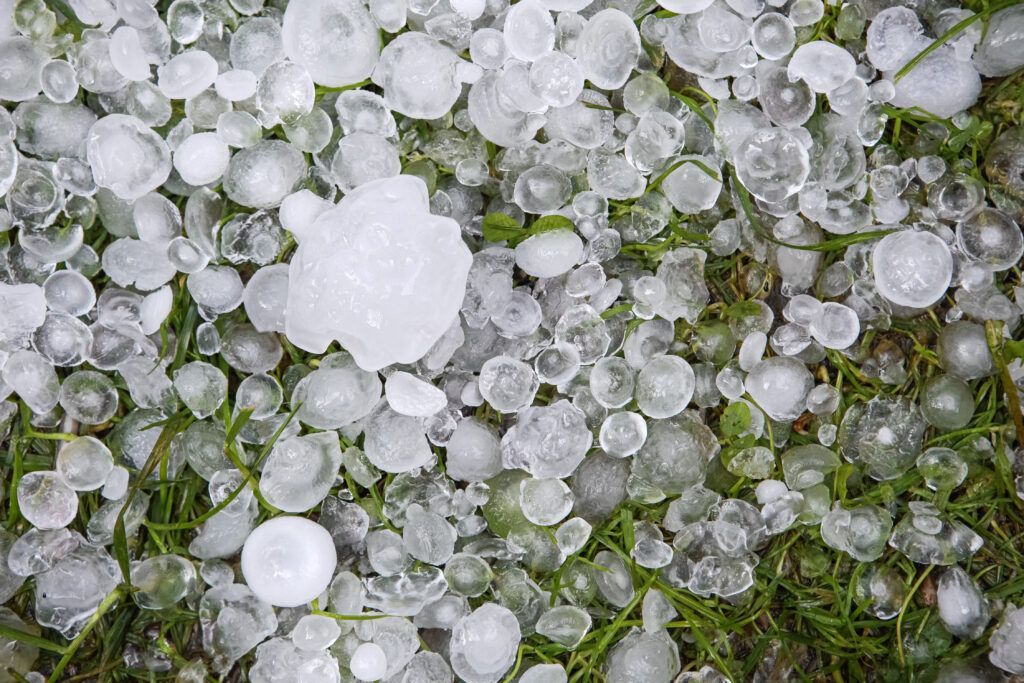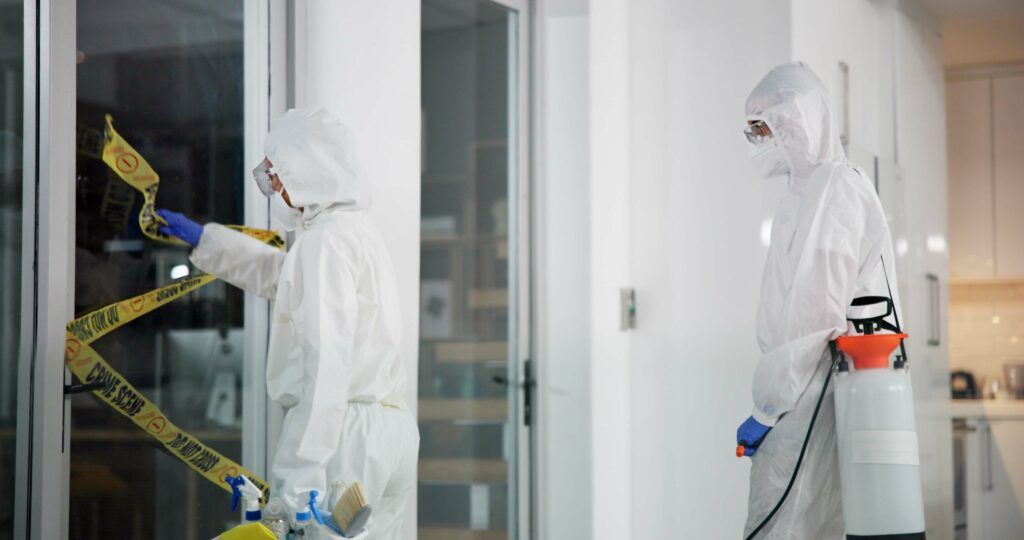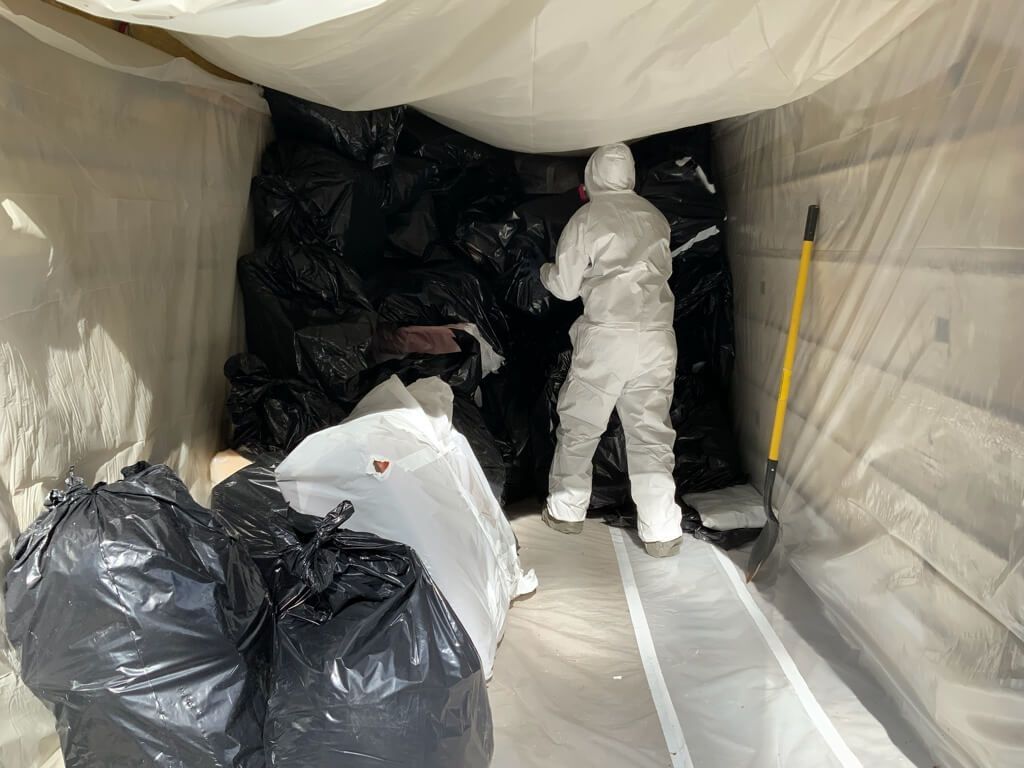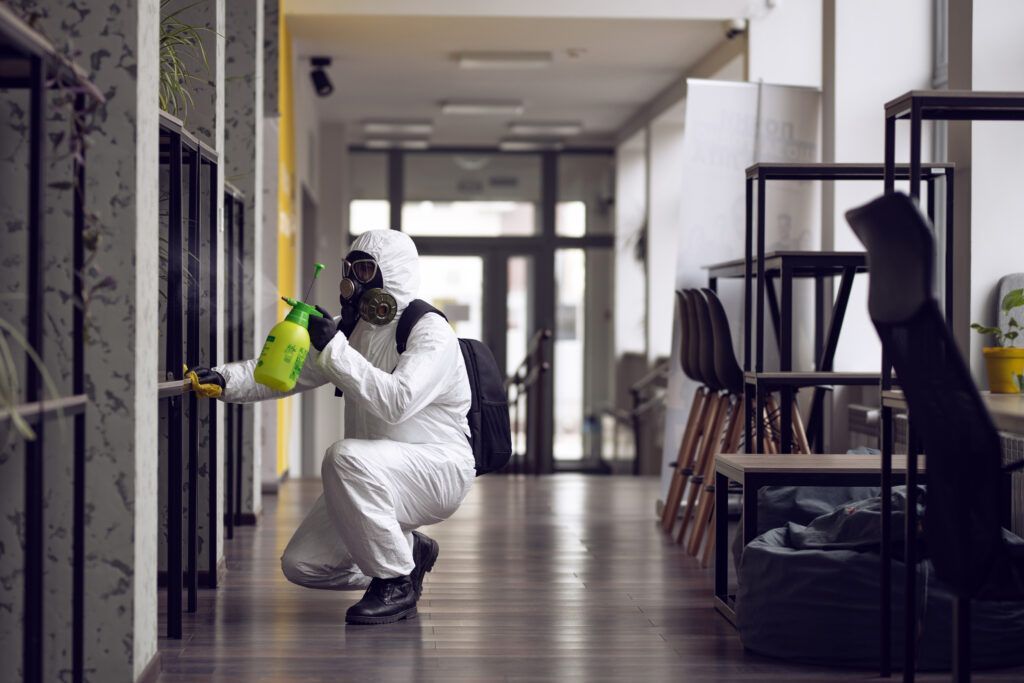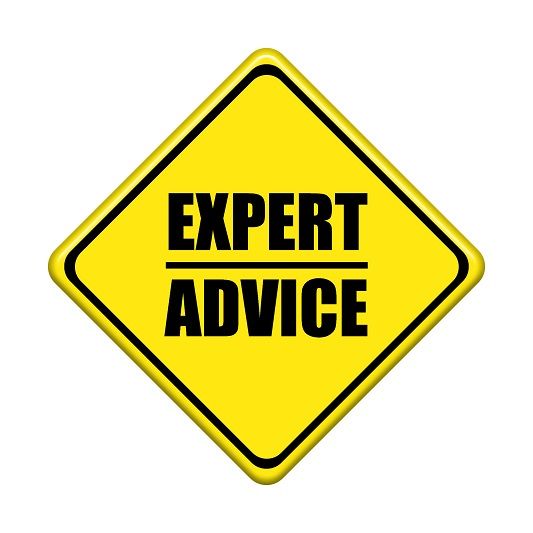What Does Black Mold Look Like?
When water enters your home, through a leak, a breakage, or another way, it is likely that mold growth will be one of the results.
Mold forms in many different colors and textures, but you can often identify black mold by its color and texture.
Stachybotrys chartarum, or black mold, is one type of mold that has gained fame as a potential health hazard. The truth, though, is that it is similar in this regard to other types of mold growth.
Black mold can look like a greenish-black mold. When wet, the mold looks greenish-black and slimy, but can also look black and soot-like.
If there is water damage to drywall, wood materials, carpet, or wallpaper, there is a high probability that mold and even toxic black mold is present.
Identifying black mold or the type of mold that is growing in your home, where it is hiding, and working to mitigate and restore the damage that it causes is vital to protecting the health of those who live and work in your home.
This is simply too important to try to do yourself, and professionals, like the Denver-based technicians at HRS, are able to ensure that your family is protected from lingering mold growth and the health issues it can cause.
Contact us as soon as you discover a water breach, and our mold inspectors can help you find the moisture and stop the mold — no matter where it hides in your home.
What Is Black Mold?
Black mold, like all molds, is a fungus that grows in moist, humid, and dark areas. It is composed of spores that float in the air and can be dangerous to some who inhale it.
The scientific name for black mold is Stachybotrys chartarum. You can tell it is black mold by its greenish-black color. It can grow on materials with a high cellulose content, like wallboard, wooden products, and paper.
Growth happens when there is moisture from water damage , water leaks, condensation, water infiltration, or flooding. Constant moisture is required for its growth.
Is Black Mold Dangerous?
Black mold has not been shown to be any more dangerous than other types of mold that may grow in a home after a water breach.
That said, all mold can cause health-related issues in those who are sensitive to inhaling spores or who have been exposed for an extended period.
Black mold exposure can lead to long term lung issues, allergy-like symptoms, and even psychological issues in some people. According to the CDC's information on Stachybotrys, symptoms can vary widely depending on individual sensitivity and exposure levels.
Symptoms Of Black Mold Exposure
Exposure to black mold can lead to health issues for many people. This is especially true for those who are sensitive to the spores that the fungus sheds as its colonies grow.
Extended exposure to a large growth dramatically increases the chance for mold-related illnesses to develop. This is why it is essential to ensure that all mold is found and mitigated after a water event.
A professional mold remediation service from HRS offers the technology and expertise you need to ensure that all mold is identified and removed.
Exposure to black mold can lead to a variety of symptoms including, but certainly not limited to:
- Headaches
- Joint pain
- Coughing
- Wheezing
- Lethargy
- Psychological issues
- Itchy eyes
- Runny nose
Black Mold Vs. Toxic Mold
All mold can be toxic to those who are sensitive to its spores.
Mold, black and other types, shed spores that float in the air that we breathe. When allowed to grow into colonies after a water breach, the sheer volume of spores can lead to illness in many people.
Toxic mold exposure can lead to long-term illnesses including lung damage, brain damage, joint pain, and psychological issues for some people.
What Causes Black Mold?
Black mold growth is caused by a water breach in a home or on a property. It is a common type of mold to find growing after a water emergency. You know that it is black mold when you see its greenish-black color and smell the earthy, musty odor it emits.
Sustained water coming into contact with a host material such as wood, paper, wallboard, and carpet, allows mold spores to attach and begin to grow into a colony. The colony can spread as long as the material of the host remains moist. Some colonies can grow as much as a square foot per week.
Black mold will continue to thrive until the water that allows its growth is removed.
How Does Black Mold Spread?
Black mold spreads when it is allowed to attach to a material that is absorbent and has become moist. Wooden materials, wallboard, carpet, and paper products are just a few of the ideal hosts for mold to begin to build a colony and spread.
In addition to water, mold thrives in areas that are dark and humid. This can make it hard to find in a home because it may spread behind doors, under tiles that have become loose, and in the shag of carpets. Undiscovered mold will continue to thrive until the moisture it needs to grow is removed and dried.
Signs Of Black Mold In A House
As a homeowner, you might wonder how to identify signs of a black mold growth in your home.
The first and most important realization for you when you are looking to spot a black mold growth is that there has been a water breach in your space. This can be a large breach such as a major breakage (think water line) or a smaller leak of a roof or through windows. In either case, the moisture that comes in makes black mold growth likely.
Other clues to a black mold issue can include:
- Dark spots on a wall
- Discolored tile grout
- Warped or bulging doors
- Baseboards peeling away from walls
- Spots on carpets
What To Do If You Find Black Mold In Your House
If you suspect that there is a growth of black mold in your home, there are a few actions that you should take to immediately limit the chance that those who live and work in the space are safe.
The first is to contact a mold remediation service, like that offered by HRS in Denver to seek a mold inspection. A mold inspection that is completed by a certified technician can help you identify where moisture is coming into your home and which type of mold is growing.
This can lead to a mold remediation and restoration that can not only stop the moisture but clean, disinfect and repair any damage that was done by the mold growth.
The EPA recommends professional remediation for mold areas larger than 10 square feet or when dealing with contaminated HVAC systems, as improper handling can spread spores throughout your home.
Why Choose HRS Restoration Services?
There is so little time to waste when you discover a water beach in your home. Damage happens quickly, and mold — commonly black mold — can begin to grow in just a few hours.
As professional mold and water remediation and restoration experts, the team at HRS is ready to help homeowners in Denver who suspect mold is growing.
We have a combined two decades of experience helping people just like you who want to protect the health and safety of those who live and work in homes that have had a water breach and may be suffering a mold infestation.
Our team of certified technicians, licensed contractors and customer service professionals partner with you and your insurance company to ensure that the mold is found, removed and all damage is repaired in the quickest and least stressful manner possible.
Contact HRS Restoration Services Today!
Mold needs water to grow and both mold and water can cause damage to a home quickly. In Colorado, the best team to contact when this happens in your home is HRS Restoration Services.
Water emergencies and mold growth can lead to health issues, but when you contact our emergency services team, we can help limit this result for you and your family. Get the process started today if you have found mold or suspect it is growing in your home.
Call HRS Restoration Services today at 303-241-7849 for fast, professional restoration help.
